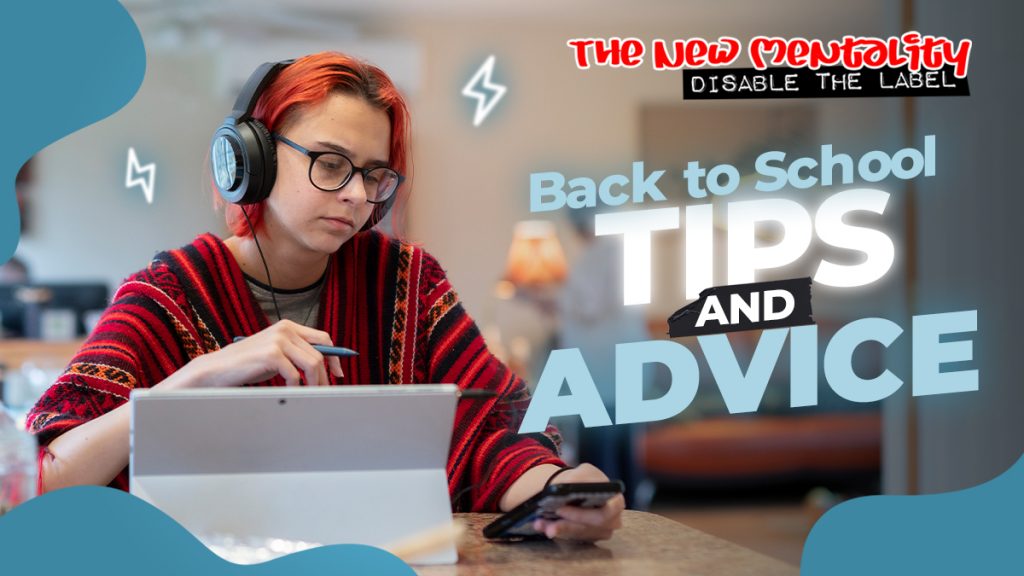This post was originally shared by The New Mentality.
The start of a new school year can normally bring on a mix of different emotions – excitement, joy, and happiness, but also nervousness, discomfort, and stress. The pandemic drastically changed how the school year ended in the spring, and the return to school has been uncertain for the most part over the summer months. As we enter the final week of summer before school starts, we invited youth to share their thoughts on going back to school during this time.

Safety
Despite safety measures such as physical distancing and masking, students are still worried about the risk of spread between students and teachers, and to their family members. In addition to becoming ill, those who catch COVID-19 may pass it on to others, must self-isolate, and would miss out on school/work. The consequences are wide-ranging.
“Something that is definitely on my mind is the safety of everyone returning, especially older teachers. I hope that teachers and administrators are given the most support possible because they see hundreds of students daily.”
Transition to Online Learning
Although schools have turned to online learning to allow students to continue learning at home, youth are worried about the effectiveness of online learning. Online learning doesn’t work for everyone, and may not be appropriate for all subjects. This can be challenging in different ways for all students, and even more so for those who need to achieve certain grades in order to apply for universities and colleges.
“I’m most worried about the transition to an online format, and how it might impact my ability to learn or access resources in my community.”
Accessibility to Online Supports and Resources
Although students have different preferences for in-person vs. online learning, many youth say it is important for schools and community child and youth centres to have online supports and resources. In order for youth to know about the resources available to them, schools and community child and youth centres need to promote their resources and provide information about the types of supports available, how to access them, and if and how they have been modified.
Accessibility to online supports and resources is equally important to the availability of these resources. For those who do not have access to digital devices or Internet connection at home, youth may have to rely on schools to provide laptops and Wi-Fi at school or in other public areas. If online supports cannot be made available or accessible to all students, youth suggest that community child and youth centres could go to schools to reach more students.
“Providing online support is the best way to help those who might not be able to or be hesitant to reach out in person.”
Socialization with Peers
For a lot of students, extracurricular groups are a way to meet new friends, socialize with peers, and destress from busy times during the school year. While many of them can “meet” online, it feels less intimate than in-person gatherings. For some, they may not feel safe meeting with their groups online at home.
“I get really overwhelmed during busy times of the school year and dread going to class because of a fear of getting even more behind, so most of the time, the only reason I can get out of bed and drag myself to school is because I’m looking forward to a club I have during lunch or after school.”
Tips and Advice from Youth for Youth
As a new school year approaches, we asked youth what advice they would give themselves and their peers to overcome the challenges of a new school year during a pandemic. During this stressful and uncertain time, it is important to remember to check in and take care of yourself and reach out to friends and other support networks if you need.
“Stay safe and take care of yourself.”
There are many different and polarizing opinions about COVID-19 and this can feel overwhelming. It is important to take a pause and think about what is best for you but also safe for you and those around you. If staying active helps you destress, go outside for a walk while practicing safety measures like physical distancing and masking.
“It’s okay to take a break!”
With more time at home, it can feel like we need to be doing as much as possible, trying as many new things as possible. But you don’t always have to be productive – it is just as important to rest and take a break.
“Share how you feel with other people because not talking about it can sometimes make it worse.”
Staying connected with friends or your other support networks can make it easier to deal with the challenges and uncertainties during this time. While it may feel limiting or intimidating to meet in person, there are many ways to stay connected using group call platforms and online games. To switch it up, you can create “care packages” with notes, games, small gifts, or other things that your friend likes, and do a gift exchange while practicing physical distancing.
Read More
For more information and resources, see the Back-to-School Mental Health Kit
Also, check out The New Mentality for more youth resources.


0 Comments